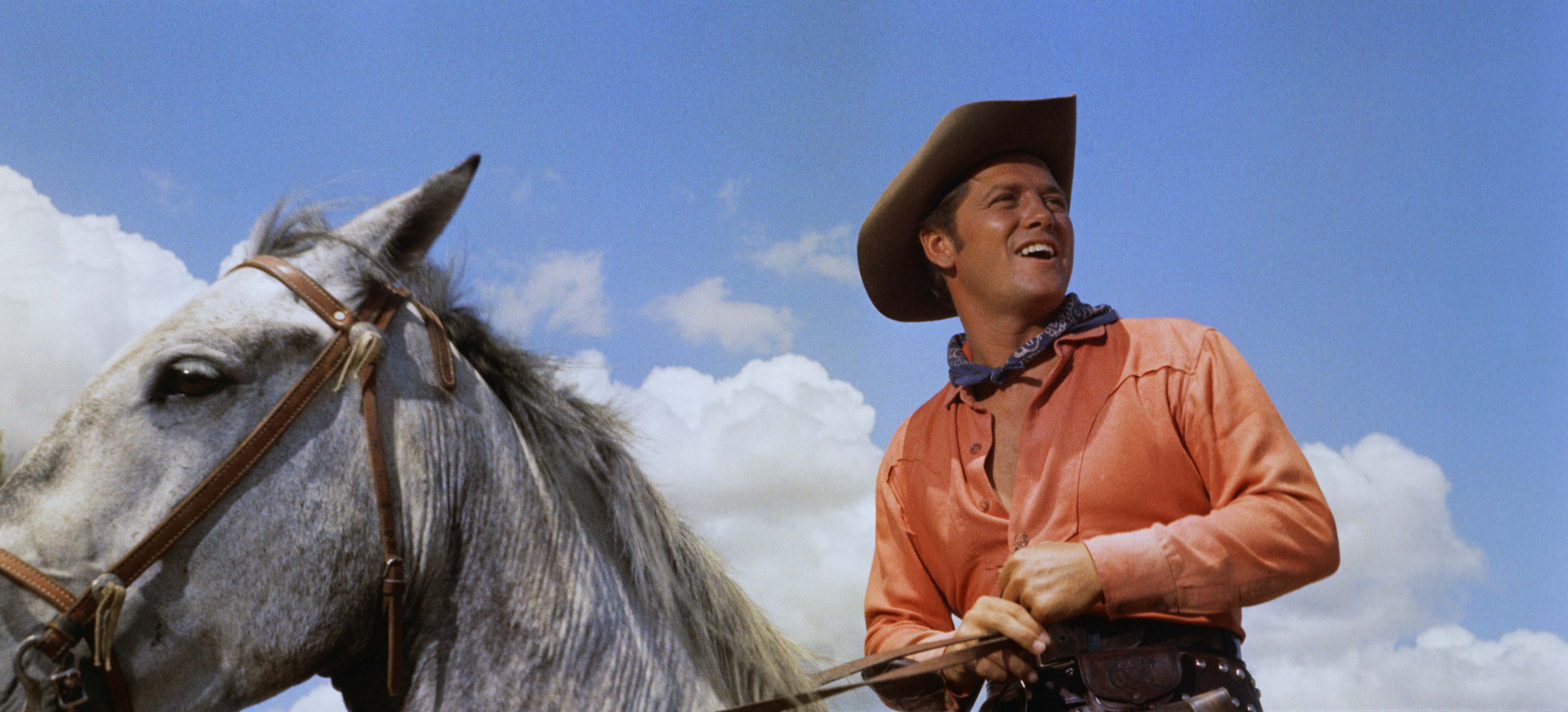The decision to hire Fred Zinnemann as the director of the film version of the Rodgers & Hammerstein musical “Oklahoma!” was peculiar – the director never helmed a musical before and was best known for his intensely riveting dramas such as “The Search,” “The Men,” “High Noon,” “The Member of the Wedding” and the Oscar-winning “From Here to Eternity.” One would imagine that bringing in a veteran musical director such as Stanley Donen or Vincente Minnelli would seem more logical for a vehicle like “Oklahoma!” – this would seem to be the job for an expert in the light and breezy, not in doom and gloom.
But Zinnemann’s predilection for the dramatic gave the frothy “Oklahoma!” a sense of complex gravitas that was absent from other mid-1950s musicals – not to mention the original Broadway production – and when viewing it today, it seems more modern when many of the other musicals of the decade seem badly dated. Part of this was achieved in the off-beat casting of Rod Steiger (who transformed the character Jud Fry from a stock villain into an emotionally tortured untouchable) and film noir diva Gloria Grahame (who played the comic relief Ado Annie without a trace of wink-and-nudge farce, thus making her character’s sexual cluelessness more humorously invigorating). Zinnemann might have taken the film into even darker territory, as witnessed in his unusual eagerness to audition non-musical young Method actors Paul Newman and James Dean for the Curly role. But under Zinnemann’s direction, Gordon MacRae, a usually bland musical-comedy performer, tapped into hitherto unknown dramatic abilities as he plumbed Curly to find an insouciant malevolence that clouded the character’s personality and motivation.
Still, “Oklahoma!” is a musical and not a melodrama, and Zinnemann responded to the material with an imaginative style that took full advantage of the widescreen format (the film was simultaneously filmed in the Todd-AO and CinemaScope processes) and vibrant rural locations (in Arizona, as Oklahoma proved oddly incompatible for the production). The classic score was wonderfully enhanced with boldly conceived outdoor sequences – “Oh, What a Beautiful Mornin’” and “The Surrey with the Fringe on Top” are playfully visualized while the complicated “Kansas City” dance number was staged with a large ensemble in an open air train depot. Zinnemann also provided expert framing for Agnes de Mille’s groundbreaking dream ballet, which offered an astonishing avant-garde sequence laced with psychosexual menace.
It also helped that the film brought in reliable performers to inhabit the broad roles with unapologetic hamming – Eddie Albert’s oleaginous Persian peddler, Gene Nelson as the handsome but dim cowboy and the sublime Charlotte Greenwood as the earthy Aunt Eller offer a jolly presence to keep Zinnemann’s edgier elements in check, creating the cinematic equivalent of a yin-yang balance. The biggest surprise was the film’s greatest gamble: putting unknown Shirley Jones in the central role of Laurey. The young actress was not lacking in photogenic charms and a fine voice, and Zinnemann carefully guided her through the role’s light comedy and difficult emotional turns, which resulted in one of the most startlingly effective film debuts.


